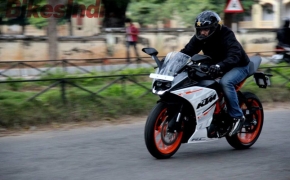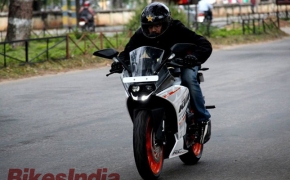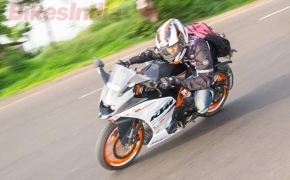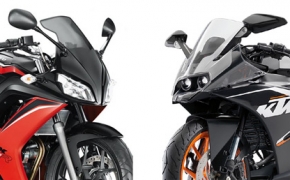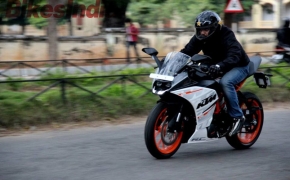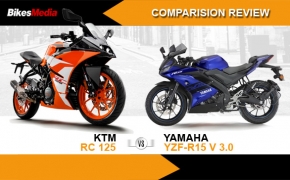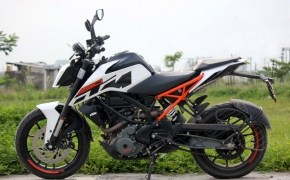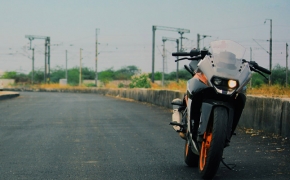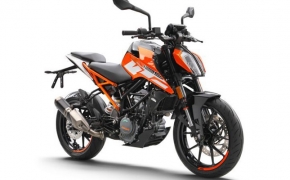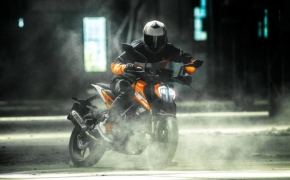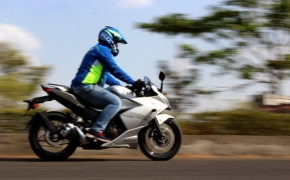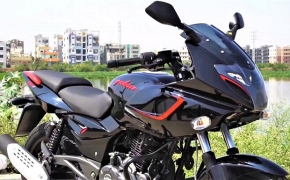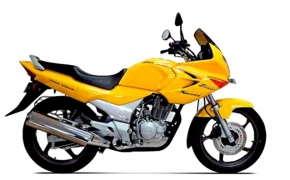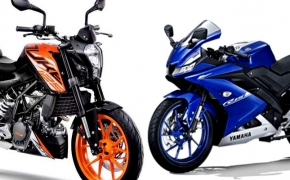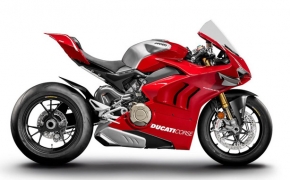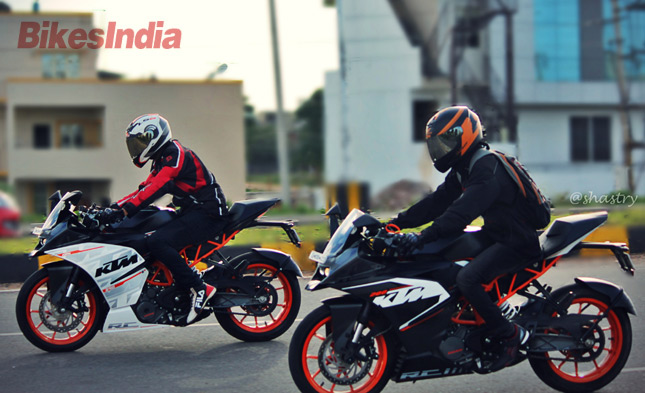 Taking a gander at these bikes and it takes you back to 80's and 90's, the point at which the Japanese European passage level sportbikes were attractive set up together and boosted performance to coordinate. The characteristics of the striking identity of its full developed kin from RC8 1190. Grown as a team with KTM's autonomous outline studio in Anif– Salzburg, Austria, over the previous decade, has turn into the true style focal point of KTM (for as far back as couple of years, the studio has additionally been in charge of item dispatches), the motorcycles have individual and strongly fearless looks.
Taking a gander at these bikes and it takes you back to 80's and 90's, the point at which the Japanese European passage level sportbikes were attractive set up together and boosted performance to coordinate. The characteristics of the striking identity of its full developed kin from RC8 1190. Grown as a team with KTM's autonomous outline studio in Anif– Salzburg, Austria, over the previous decade, has turn into the true style focal point of KTM (for as far back as couple of years, the studio has additionally been in charge of item dispatches), the motorcycles have individual and strongly fearless looks. As an immediate result, the forceful looks clad execution particularly custom-made for this segment, provided by a 4 stroke fuel injected engine with the legitimately allowed power of 24.7 bhp at 10,000 rpm and 43 bhp at 9500 rpm for both RC200 and 390 respectively . The capable 2 strokes of the past which were dreaded by folks are ancient history. Any individual who needs more power will need to decide on RC8. The RC200 and 390 without a doubt passes on an impression of a more adult bike, however and this is somewhat because of the haio impacts of KTM's command of the Moto3 class. The style is conclusive, striking and individual, with geometric faring components like the features of a diamond and vast volds leaving parts of the casing presented to see.
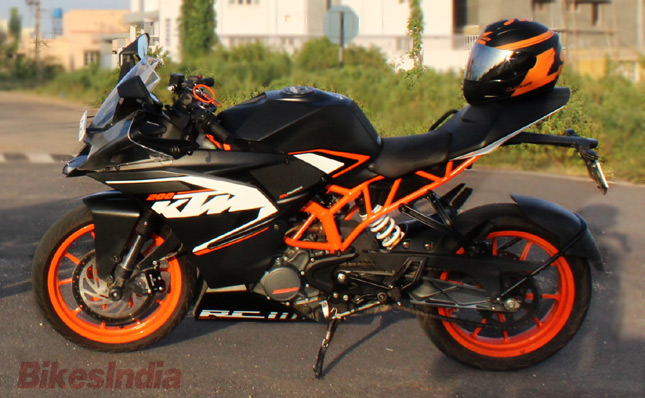 There is a steel tube trellis edge frame, furnished with an upside down front fork and a swing-arm with adaptable monoshock, while the brake system, with ABS (RC390), was produced as a team with Brembo. A saddle-tail segment styled to resemble a single seater, the comprehensive instrument cluster and the colour contrast between the black super-structures and orange frame complete the picture.
There is a steel tube trellis edge frame, furnished with an upside down front fork and a swing-arm with adaptable monoshock, while the brake system, with ABS (RC390), was produced as a team with Brembo. A saddle-tail segment styled to resemble a single seater, the comprehensive instrument cluster and the colour contrast between the black super-structures and orange frame complete the picture.
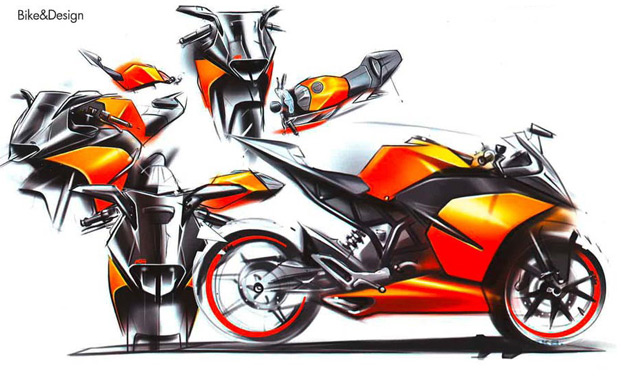 The advancement of the bike took almost over a year split just as between characterizing the style and preparing the model for mechanical creation. Almost TWO months it took for initial sketching, with various distinctive proposition delivered by 4 designers, out of which one was chosen and afterward moved to digital work and clay milling.
The advancement of the bike took almost over a year split just as between characterizing the style and preparing the model for mechanical creation. Almost TWO months it took for initial sketching, with various distinctive proposition delivered by 4 designers, out of which one was chosen and afterward moved to digital work and clay milling.
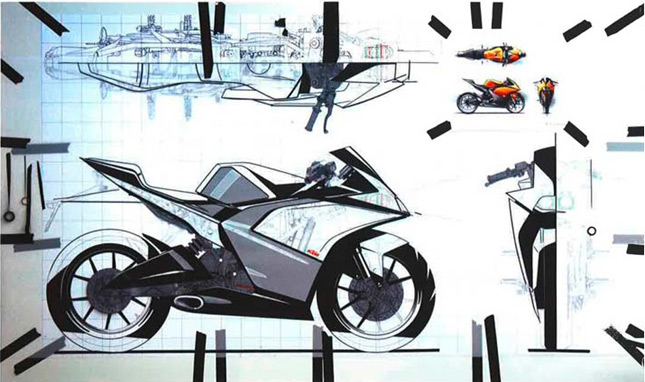 The final drawings show the imaginary line that unites the two-seater saddle in a single piece with the front wheel pin. The aggressive front view with the twin lights and transparent canopy combined with the instruments.
The final drawings show the imaginary line that unites the two-seater saddle in a single piece with the front wheel pin. The aggressive front view with the twin lights and transparent canopy combined with the instruments.
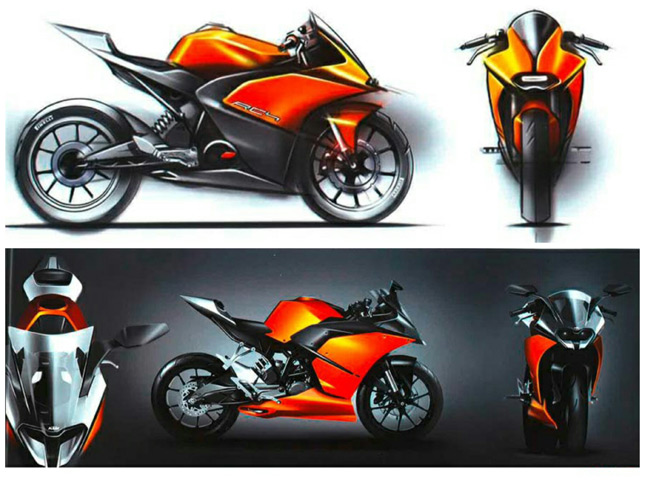 KTM claims it be the most ergonomically designed track bike. The RC200 differs from the RC 390 only in its colour scheme, engine size and weight. With this choice KTM aims to offer amateur riders a significant bike and to the more mature riders a lot of agility with the RC390.
KTM claims it be the most ergonomically designed track bike. The RC200 differs from the RC 390 only in its colour scheme, engine size and weight. With this choice KTM aims to offer amateur riders a significant bike and to the more mature riders a lot of agility with the RC390.The Ride:
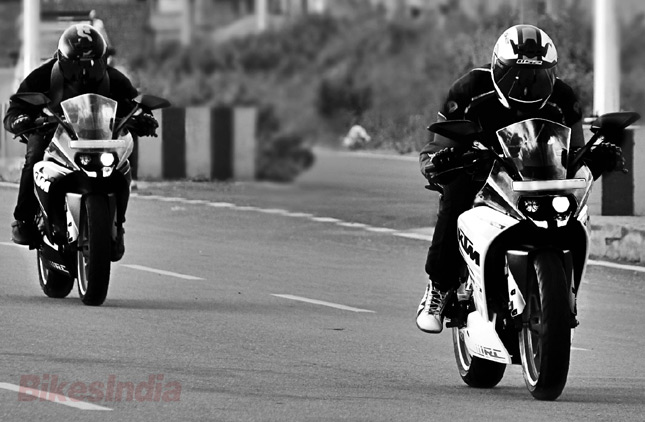 The entry level sportbikes market has grown in India since a decade and a half. We have seen this interest in our generation who happen to see 150 cc bikes in early 2000’s when Hero Motor Corp (Hero-Honda) launched CBZ. Now that there is a majority of the population in the country who would like to own a proper entry level sportbike/ track bike, the motorcycle market has grown big. One major point we kept in our mind while taking out the KTM RC duos on road is how all faired bikes are simply misunderstood as track bike by major group of people. So we decided to take a ride of both KTM RC200 and RC390 and see how they are performing on our roads.
The entry level sportbikes market has grown in India since a decade and a half. We have seen this interest in our generation who happen to see 150 cc bikes in early 2000’s when Hero Motor Corp (Hero-Honda) launched CBZ. Now that there is a majority of the population in the country who would like to own a proper entry level sportbike/ track bike, the motorcycle market has grown big. One major point we kept in our mind while taking out the KTM RC duos on road is how all faired bikes are simply misunderstood as track bike by major group of people. So we decided to take a ride of both KTM RC200 and RC390 and see how they are performing on our roads.
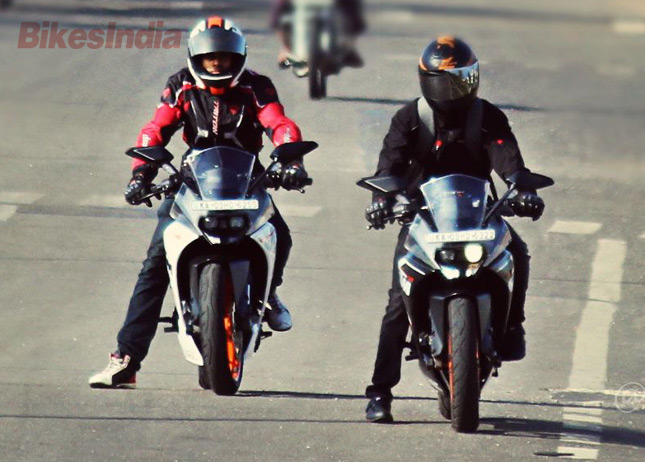 Brighter, warmer part of the day with patches of clouds over us gave us the right spirit to ride our bikes across the town. With pretty much less traffic on a weekend it felt exactly same as a racing track, riding gear were all set and we started to ride. Initial part of the ride was just to warm up the tyres and catch some rhythm. Soon we felt that the tyres are warmed up, slowly we started to increase the throttle hitting right speeds at the right place. After covering majority of the places in the outskirts of the city here what we have to share with you:
Brighter, warmer part of the day with patches of clouds over us gave us the right spirit to ride our bikes across the town. With pretty much less traffic on a weekend it felt exactly same as a racing track, riding gear were all set and we started to ride. Initial part of the ride was just to warm up the tyres and catch some rhythm. Soon we felt that the tyres are warmed up, slowly we started to increase the throttle hitting right speeds at the right place. After covering majority of the places in the outskirts of the city here what we have to share with you:Much has been as of now said in regards to the entrancing looks of the KTM's Race Competition (RC) bikes. The bikes offer an astonishing worth for cash recommendation and specially there aren't numerous rivals in the RC200's segment that can offer a superior deal. The double projector fog light gives the RC200/390 an outsider gaze upward front while the back seat has been consummately etched to show up like a cowl. RC200/390 is a certain shot consideration grabber and stops people in their lanes any place it goes.
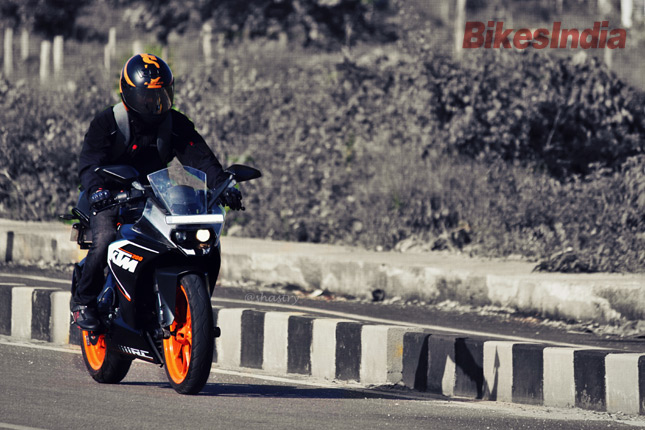 Short gears of RC200 snap off rapidly in the rich smooth transmission that pleasantly endures clutch-less upshifts. An unassuming grasp draw and smooth balance makes for simple getaways, supported by a decent supply of low-end snort from the injected engine, which is more plentiful than from a CBR250.
Short gears of RC200 snap off rapidly in the rich smooth transmission that pleasantly endures clutch-less upshifts. An unassuming grasp draw and smooth balance makes for simple getaways, supported by a decent supply of low-end snort from the injected engine, which is more plentiful than from a CBR250.The overall riding posture can get a little painful, especially in stop-and-go traffic and it won’t be easy to live the motorcycle on a day-to-day basis. The super dynamic ergonomics of the bikes make them fairly hard to ride, particularly on the long runs. A ride of about 40 minutes will make you get off the bike and stretch your muscles. However, take the bikes where they has a place, i.e. on the tracks, and you come to understand the genuine persona and the explanation for that RC identification. As said by KTM amid the launch occasion, the RC pair have been produced for the sole motivation behind being ridden on a circuit.
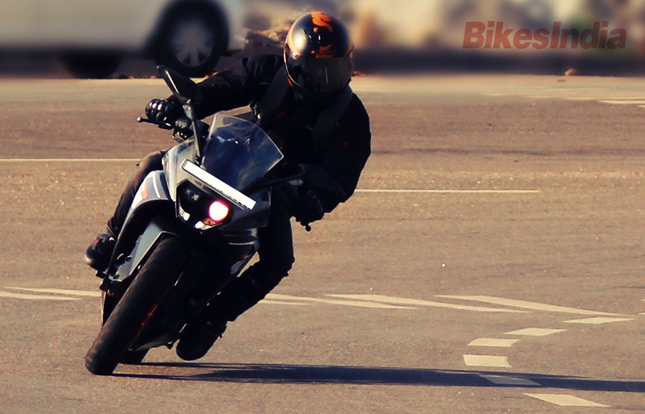 The RCs weren't exactly as coordinated as we anticipated from a motorcycle with a precarious 23.8-degree rake consolidated with a small 52.8-inch wheelbase. In any case, it's still extremely energetic to twist into corners while being pleasantly certain footed. The firm seat makes it simple to move around on, yet the hardness became tedious before the end of our road ride.
The RCs weren't exactly as coordinated as we anticipated from a motorcycle with a precarious 23.8-degree rake consolidated with a small 52.8-inch wheelbase. In any case, it's still extremely energetic to twist into corners while being pleasantly certain footed. The firm seat makes it simple to move around on, yet the hardness became tedious before the end of our road ride.The brake calipers are from ByBre unit, which is a Brembo-built piece that is fabricated in India. The rear disc is a 230mm unit cinched by a solitary cylinder caliper. Bosch 9MB two-channel ABS is standard hardware on RC390 and can be switched off if fancied.
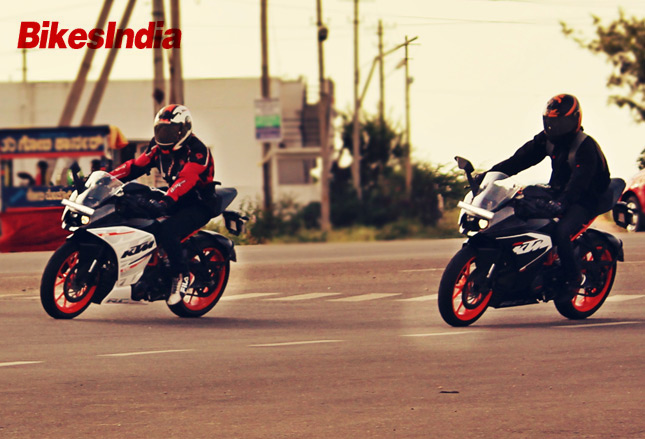 The short gear ratios imply that the RC200 doesn't have any fits while doing 0-60kmph and is totally agreeable when revved up to the redline. We did 0-60 in 3.8 seconds. The KTM RC 200 has been dominated by its greater kin, the RC390. The RC 200 clearly isn't as quick as the RC390; neither does it get ABS or sticky Metzeler rubber. In any case, out in this real world, it's a more viable bike, with better engine configuration, more usable power, less heating issues.
The short gear ratios imply that the RC200 doesn't have any fits while doing 0-60kmph and is totally agreeable when revved up to the redline. We did 0-60 in 3.8 seconds. The KTM RC 200 has been dominated by its greater kin, the RC390. The RC 200 clearly isn't as quick as the RC390; neither does it get ABS or sticky Metzeler rubber. In any case, out in this real world, it's a more viable bike, with better engine configuration, more usable power, less heating issues.The little KTM blissfully assaults the corner, with its light weight permitting instant changes in direction, while the firm body remains pleasantly planted and certainly motivating notwithstanding amid forceful moves.
The exhaust note is comparative too, so it won't generally energize you yet the refinement levels are superior to its greater kin, the recent sounding unpleasant in correlation. Contrasted with the Duke 200, the RC 200 does sound some more refined yet that is to a great extent as a result of the fairing which improves work in secluding engine noise. While the 390 twins are tall-geared, the 200 twins are shorted equipped (you can ride in higher gears at low speeds without hardly lifting a finger).
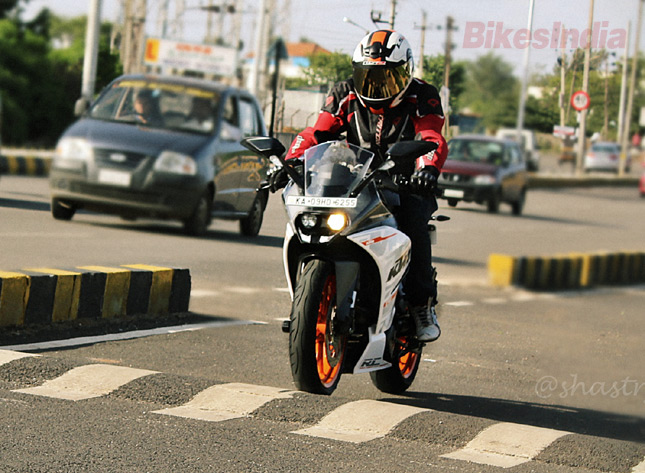 Other issue is obviously the ground clearance, which disregarding being raised, is of little help when you have a heavy pillion on board. Yet at the same time, on the off chance that you ride solo and corner hard, the RC 200 won't rub its underbelly on a leveled street. Fuel efficiency of RC200 is greatly OK at 30 km/l in a blended riding bike of highway and city yet with the tank limit now decreased by 1-liter, the range per tank is even most exceedingly awful than Duke.
Other issue is obviously the ground clearance, which disregarding being raised, is of little help when you have a heavy pillion on board. Yet at the same time, on the off chance that you ride solo and corner hard, the RC 200 won't rub its underbelly on a leveled street. Fuel efficiency of RC200 is greatly OK at 30 km/l in a blended riding bike of highway and city yet with the tank limit now decreased by 1-liter, the range per tank is even most exceedingly awful than Duke. The suspension appeared to be excessively consistent in the city. The RC's powertrain isn't absolutely without flaws. Alongside the previously stated brief mid-range level spot, gearshifts from third to fourth were incidentally not neatly connected with if rushed. Something else, the KTM's powerplant is better than any sub-400cc contender.
Conclusion:
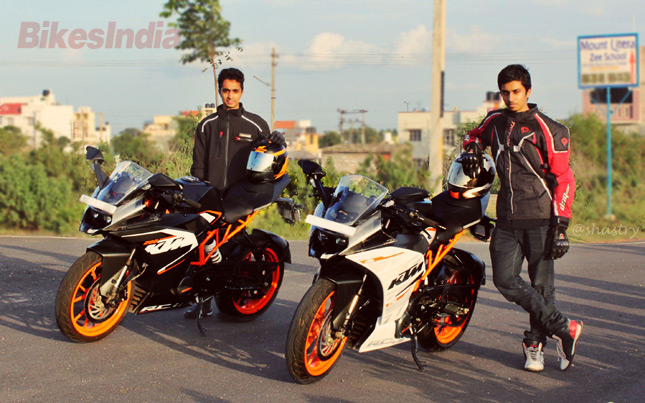 In view of the measure of fun and rushes got amid our ride. The KTM RC 200 has been quite dominated by its greater kin, so much that nobody truly speaks much about KTM's entrance level faired motorcycle. Its excellent element abilities make it an unquestionable requirement, for riders considering smaller Hyosungs, Ninjas and CBRs. On the off chance that you are new to biking, need to learn and ride all over the place once a day, the RC 200 is the bike for you however in the event that you rate control over reasonableness like us.
In view of the measure of fun and rushes got amid our ride. The KTM RC 200 has been quite dominated by its greater kin, so much that nobody truly speaks much about KTM's entrance level faired motorcycle. Its excellent element abilities make it an unquestionable requirement, for riders considering smaller Hyosungs, Ninjas and CBRs. On the off chance that you are new to biking, need to learn and ride all over the place once a day, the RC 200 is the bike for you however in the event that you rate control over reasonableness like us.Text & Pics By: Rakshit Shastry
Ride By: Krishna Maganti and Shreesha Ramaswamy
Design Sketches Courtesy: KISKA GmBH, Salzburg, Austria












